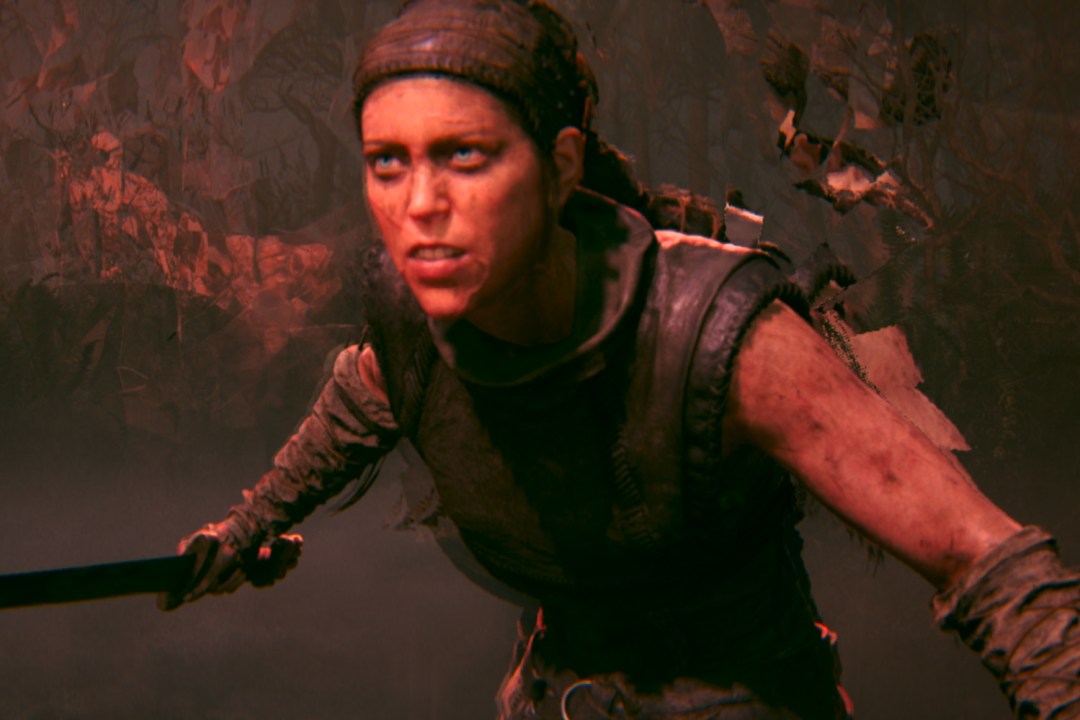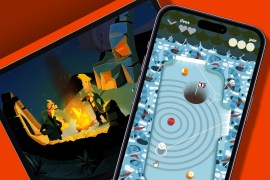Senua’s Saga: Hellblade II review – mind games
It’s not all in your head as Ninja Theory’s sequel ventures North

Stuff Verdict
A technical masterclass for depicting a serious mental condition, but Senua’s Saga doesn’t have enough involving gameplay to carry its story.
Pros
- A real technical showcase for Unreal Engine 5
- Strong performances with a larger cast
- Captures the sensory experiences of psychosis effectively
Cons
- Sluggish pacing
- Limited interactivity
- Repetitive combat and puzzles
Introduction
The original Hellblade wasn’t just an indie-sized team punching above their weight, using the latest graphics tech to tell a powerful story. Senua’s Sacrifice had the lofty aim of discussing mental health through a narrative action-adventure. The numerous awards it won and the subsequent Microsoft buy-out are clear signs developer Ninja Theory stuck the landing. Seven years on, it has returned for the follow-up.
A bigger budget has meant it meets the usual sequel expectation of being grander in scale – at least in terms of the setting, which goes beyond the dark recesses of the mind and to the gorgeous haunting landscapes of Iceland. Senua’s Saga launches during America’s annual Mental Health Awareness Month. But is there more to it than just a pretty-looking lesson on psychological well-being?
To Hell and back


Miss the first game? An optional recap fills you in: you play as Pict warrior Senua during the Celtic middle ages, on a quest to rescue the soul of her lover who was brutally sacrificed by viking invaders. She also struggles with psychosis, a mental condition that’s depicted by her hearing voices in her head (referred to in-game as furies) and seeing things that may or may not be connected to reality. Whether she actually faces otherworldly enemies or descends into Helheim is therefore up for debate – but the story focuses on accepting the condition that has tormented her throughout her life is also a part of her. Saga picks up from here.
Senua’s attention has turned to the Northmen who pillaged her land, allowing herself to be captured and taken aboard a slaver’s ship to Iceland where she seeks revenge. Unlike the introspective original game, here things open up to a wider world of Norse culture and mythology. And what a setting too, as the story takes you across the unspoiled Icelandic geography.
A bigger budget let Ninja Theory bolster the sequel’s cast. The first game blew most of its resources on capturing Senua (once again played by the award-winning Melina Juergens), transposing live-action and post-processing tricks; this time there are other flesh-and-blood characters long for the ride.
They all put in a good performance, but the real showcase here is Unreal Engine 5’s remarkable tech. Facial expressions look eerily close to the real thing and environments feel indistinguishable from a photograph. Naturally there’s a photo mode just a button press away.
Ragna-not


This sequel isn’t Ninja Theory’s God Of War: Ragnarok, though. The larger narrative depicts how others see Senua and how she can in turn help them, eventually shedding vengeance in favour of healing and redemption. But it’s not like the studio has suddenly ballooned to the size of Sony Santa Monica. The game is on par with its predecessor’s playtime of seven hours, and retains much of the same linear structure. You’ll quickly come up against the environments’ visible and invisible barriers.
It’s not like I’m asking for more scope, as there’s been a fair bit of video game bloat in recent years. But after seven years of development, I was also expecting Saga to give you a bit more to do. Surviving the opening shipwreck looks incredibly cinematic, maintained by the 2.39:1 aspect ratio that leaves black bars top and bottom throughout the game – but there are moments I struggled to discern whether Senua’s actions were just automated.
The first Hellblade‘s strongest gameplay aspect was its gruelling sword combat. Things are visually more visceral this time around, with more enemy variety (including human enemies with visible faces, rather than nondescript helmeted foes like before), but the mechanics haven’t changed at all. You use light or heavy attacks and dodge or guard, while a focus mode slows the action to wail on an enemy.
It’s also gotten worse as it’s limited to one-on-one encounters, with no strategy for taking on multiple enemies that might surround you. Gnarly enemies like Draugrs rip the heads off their victims and drink their blood – but they’ll patiently wait their turn to fight you. That makes each combat encounter drag, and if you die I can’t even say how far back the checkpoint is. It does at least have a dynamic difficulty on by default, an improvement from its predecessor, which deceived players into thinking too many deaths would result in permadeath.
Dark descent


Environmental puzzles remain the other major gameplay element. These also tie into Senua’s condition, being able to perceive another reality or seeing signs by holding down a trigger to focus. One sequence where you’re focusing on an orb that shifts environments from being obstacles to paths you can pass through aside, there’s little that isn’t a repeat of the first game, to the point of tedium for returning players.
The game likes to remind you the depiction of Senua’s condition is based on real research – there’s even a short documentary that includes interviews with a psychiatric consultant and people who live with psychosis. As far as I can tell, it does very faithfully bring to life what it’s like to experience these symptoms, especially when it comes to the voices in Senua’s head. Binaural audio means playing with headphones is absolutely recommended.
It does, however, feel largely like a repeat of what players got in the first game. The furies echo Senua’s very worst negative thoughts, casting those bad vibes outwards to other characters, yet sometimes actually encouraging her. More clumsily, they can feel like an excuse to offer hints and narration of the player’s actions.
In its oppressive horror, the first game had depicted her condition as a ‘curse’, one that straddled a thin line between being something you can either try to get over or even benefit from as a kind of superpower. Saga feels like a narrative improvement in showing how Senua copes with this condition, debating whether she should open up to someone else or not let it get in the way of her capabilities as a warrior. But then this story also casts her as a kind of chosen one who can solve the problems of a land plagued by giants because of how she sees the world differently; that feels either patronising or pandering, which I doubt was the intent. Simulating the experiences of a mental condition is one thing, but when trying to think of what the developer has to say about psychosis or for people living with it, it’s still on wobbly ground seven years later.
Senua’s Saga: Hellblade II verdict


On the surface, Senua’s Saga is what you would expect from a blockbuster sequel: a grander landscape and a bigger cast, in one of the best showcases of what Unreal Engine 5 can achieve.
But it’s often a torturous, oppressive slog. The grimmest, most nightmarish scenarios are on par with The Last of Us Part II as one of the most harrowing games in recent years – but without the same engaging gameplay to make up for it.
It’s disappointing that in the seven years since its predecessor, Saga often feels like more of the same. And while it may want marks for representing a serious psychiatric condition with all the seriousness that warrants, it doesn’t seem to have much new to say about it.
Stuff Says…
A technical masterclass for depicting a serious mental condition, but not enough involving gameplay to carry its story.
Pros
A real technical showcase for Unreal Engine 5
Strong performances with a larger cast
Captures the sensory experiences of psychosis effectively
Cons
Sluggish pacing
Limited interactivity
Repetitive combat and puzzles



